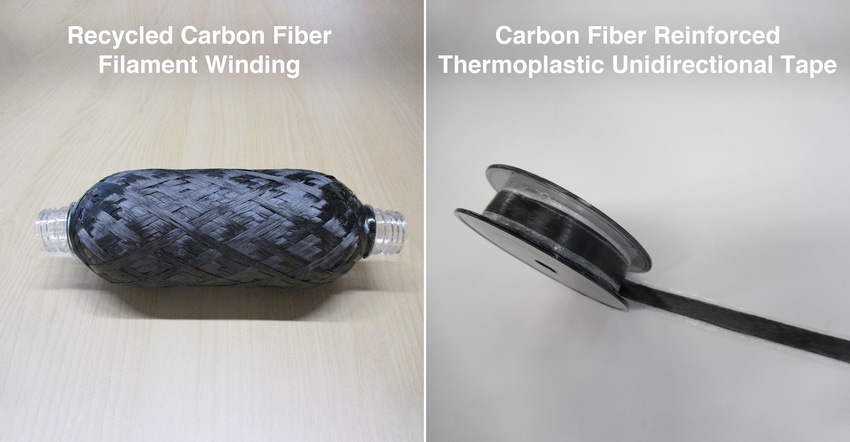Researchers Put CFRPs on Path to Circular Economy
The recycling process developed by Asahi Kasei and partners allows carbon fibers to be seamlessly extracted from a plastic compound, resulting in continuous strands of carbon fiber for reuse.
January 19, 2023

Carbon-fiber-reinforced thermoset plastics (CFRP) are highly attractive for various industries in demanding applications because of their unique balance of rigidity, mechanical strength, and light weight. However, CFRPs are typically expensive and challenging from a recycling perspective, as it is difficult to extract the carbon fibers from the resin after usage.
To address these challenges, Asahi Kasei, in collaboration with the National Institute of Technology at Kitakyushu College and the Tokyo University of Science, has developed a closed-loop recycling methodology that allows carbon fibers to be extracted from CFRPs or carbon-fiber-reinforced thermoplastics (CFRTPs) used in automobiles. This results in high-quality, inexpensive continuous carbon fiber that can be recycled perpetually, contributing to a circular economy.
Unlike carbon fiber that is chopped up during the recycling process, Asahi Kasei’s method allows carbon fiber to be extracted from a plastic compound seamlessly, resulting in continuous strands of carbon fiber that can be re-applied in exactly the same manner while retaining properties identical to the original substance.
Conventional technologies for recycling carbon fibers by chopping and re-applying them essentially results in downcycling to a product with lower quality and less durability, which is insufficient for high-performance applications. To address this issue, Asahi Kasei has developed an “electrolyzed sulfuric acid solution method” that allows the carbon fiber to retain its original strength and continuous nature while fully decomposing the resin matrix in which the carbon fiber is embedded.
|
An “electrolytic sulfuric acid solution” dissolves out the resin matrix, enabling recovery of continuous carbon fiber. |
This allows for continued use in high-performance applications and presents an inexpensive, circular solution to the end-of-life dilemma of carbon fiber and plastic compounds. Lightweight carbon-fiber compounds used in vehicles, for example, can be easily and inexpensively broken down at the end-of-vehicle-life stage and re-applied to new vehicles in the future.
In addition, Asahi Kasei is developing a carbon-fiber-reinforced thermoplastic unidirectional (CFRTP-UD) tape that utilizes both recycled continuous carbon fiber and the company’s Leona polyamide resin. Boasting a higher strength than metal, this CFRTP-UD tape can be applied to automobile frames and bodies, further enabling the recycling of end-of-vehicle-life parts into different, new automobile parts. This presents a solution to the long-term challenge posed by carbon fiber in vehicles and is expected to economically benefit and strengthen carbon fiber’s usage within the automobile industry on a global scale. Moving forward, Asahi Kasei will perform demonstrations and develop the business, aiming for practical applications around 2030.
About the Author(s)
You May Also Like





